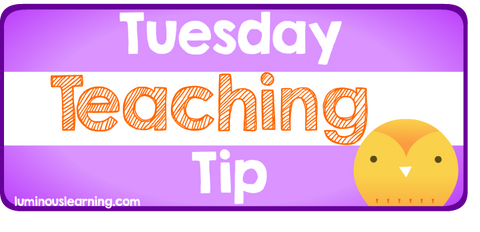Addition Fact Mastery!

We want our young students to develop fluency with their addition facts so they can easily learn more exciting, complex math topics in later grades. However, our students often confuse math facts and still rely on inefficient counting strategies, such as using their fingers, even in the later grades. Students with learning disabilities are especially prone to slow retrieval and making errors in basic computation. Why is this? Although we might not be providing enough practice with basic computation facts, it could also be a result of how we're introducing the facts. Addition facts should be taught in a systematic, sequential order to help students correctly store the facts in their long-term memory.
Goal: To move from a solid foundational understanding of addition to a rapid retrieval and fluency with addition facts. Students should be able to answer an addition question in one to three seconds.
Suggested order to teach addition facts:
1. Plus 0: Example 6 + 0
2. Plus 1: Example 4 + 1
3. Plus 2: Example 3 + 2
4. Doubles: Example 2 + 2
5. Doubles Plus 1: Example 2 + 3 (the same as 2 + 2 + 1)
5. Making 10: What numbers add up to 10? Example 3 + 7
6. Everything Else: All the remaining facts!
Students should be able to form a visual representation of addition.
When teaching addition, we want to make sure students have an underlying conceptual understanding so they're not merely memorizing a string of numbers. We build this conceptual understanding using visual representations of addition. Useful tools include number lines, fact family cards, arrays, and ten-frames.
Systematic, cumulative review is key to mastery
Each set of addition facts should be mastered before moving onto the next. For example, wait until the student fully understanding "plus 0" before teaching "plus 1." However, previously mastered facts should be systematically reviewed as students progress through the series. When giving students practice sheets, it's recommended to mix in 3 - 7 old facts along with the newly taught facts. Psychological research demonstrates that this type of cumulative practice of previously learned addition facts is one of the most powerful ways to achieve mastery.
Verbalize, verbalize, verbalize!
Don't only provide practice in writing. Students should verbalize their addition facts, which helps commit the information into long term memory. You can have students read the whole problem and answer aloud as they work independently or have the whole-class read the problems and answers aloud when everyone is finished working. This helps build automaticity, so when students hear or see "5 + 4," they can quickly retrieve the answer, "9."
Practice daily for short periods of time and set goals
Provide a time to practice fact fluency every day. For example, you can schedule a few minutes at the start of your math lesson to answer as many math facts as possible. Each student should have their own timed goal. For some students, it might be to answer 15 questions in a minute, for others it might be 30. Have students track their progress to celebrate how their fluency is increasing. Fact practice should not last longer than 4 minutes per day.
Make it fun!
In addition to fluency drills, games are great ways for students to practice their addition facts. The best games don't need more than a set or cards or dice! For example, you can play:
Get the Higher Number
Objective: Get the most cards or points
Materials: Dice or playing cards, paper/pencil to record scores
Play: Students turn over two cards or roll two dice. They add the numbers rolled or the amount on the cards to find the sum of the two numbers. The student with the highest sum wins a point for that round. If the students have the same sum, neither wins that round and they continue playing. The player with the most points at the end of the game wins. Alternatively, you can have students play until they reach a set score, such as 15.
Automatic recall of addition facts is a necessary skill that students with disabilities often struggle with. A systematic approach to teaching computation facts, along with frequent review of previously mastered facts and occasional computation games, will help students practice and memorize their addition facts. Developing a solid foundation and automatic recall of math facts is a key component in a larger mathematic curriculum.

